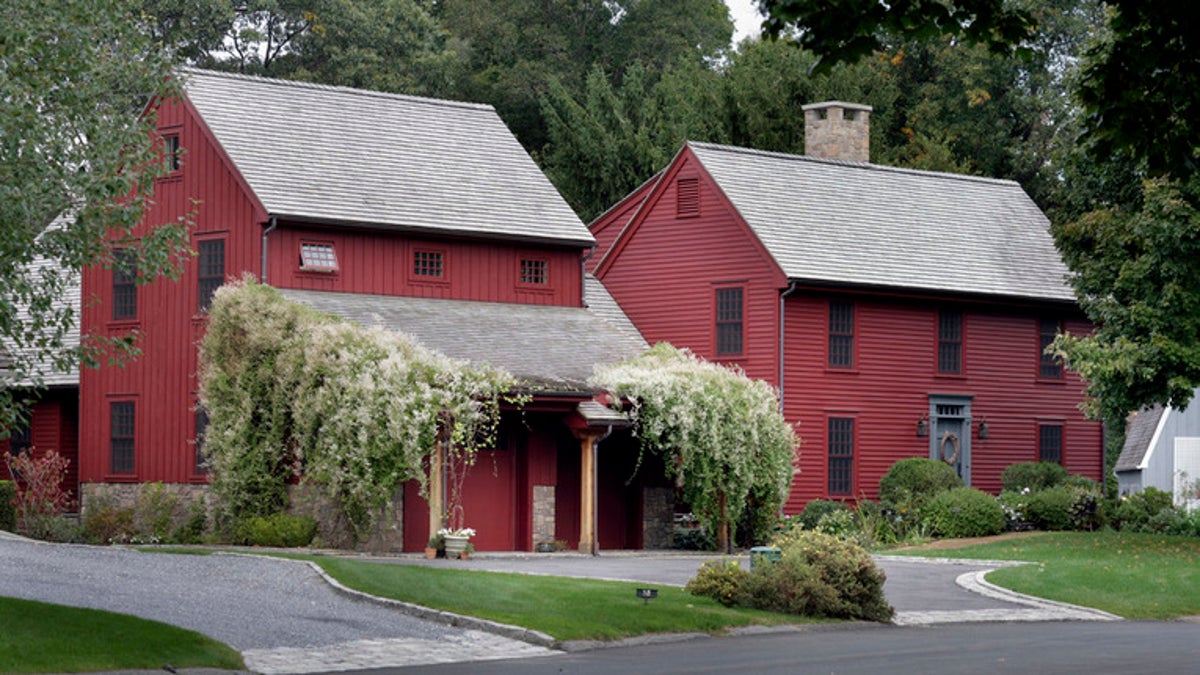
If you want to give your home more curb appeal, one great way to start is by giving the exterior a thorough cleaning. An exterior that sparkles in the sun can make a world of difference. But if you're about to reach for a pressure washer, stop right there. Not all surfaces can handle the intense spray of a pressure washer; some, like brick, can be damaged by the wrong tools. Here you'll find out which method is best for your home, along with more know-how you'll need to get the job done right.
When to pressure wash. Vinyl or wood siding, or a hybrid material, is typically strong enough to withstand pressure washing. But before you head to the home improvement store, consider just how dirty your house is. It's best to start with the lightest, gentlest cleaning method that is effective and work your way up from there.
Don't reach for the pressure washer unless you have some serious grime to contend with — a light layer of dirt and road dust can be easily cleaned using a plain old garden hose. If your home has sturdy siding and needs more power than a garden hose can muster, a pressure washer can be heaven sent.
Get prepared to pressure wash. If you own your home and plan to use a pressure washer at least once each year, it could be worth it to buy your own. They are not cheap ... but they are not cheap to rent, either. If you cannot reach the upper floors of your home on a ladder, consider hiring a pro to do the job. If you are doing it yourself, follow these steps:
1. Soap or no soap? Water alone is enough to get most exteriors clean. If you have mold or mildew, use a specialty house cleaner designed to kill mildew in the pressure washer's detergent compartment.
2. Choose the right nozzle. Pressure washer nozzles are measured in degrees — those that shoot water in a very narrow area have the strongest spray (zero is the strongest) and should be used very cautiously. For most homes a nozzle with a 40-degree spray should suffice, so start there and work your way down to a 25-degree nozzle if necessary.
3. Secure windows, doors and pets. Make sure dogs (who could be curious about the spray) and children are inside, and close all the windows and doors before getting started. Also put on a pair of safety goggles to protect your eyes from dirt and debris.
Pressure washing safety. Treat your pressure washer with respect and common sense, the same as you would any other power tool — because it is potentially just as dangerous. The spray that comes out of the tip of the power washer is so concentrated, it can slice through skin, so keep children and pets away while you are working, and never direct the pressure washer at a person.
Also avoid spraying windows, as the spray could break the glass, especially in older homes with single-pane windows.
How to pressure wash your house:
- Spray at a downward angle. Siding is designed to protect your home from weather ... and weather comes from above, not from below. Work with your home's protective features and direct your sprayer downward. Never spray into seams or cracks in siding where water can become trapped and damage your house.
- Test a small section. Before getting too far along, turn off your pressure washer and take a close look at the first small section you've completed. If you see any evidence of damage, switch to a regular hose. If it looks good, continue!
- Keep the hose moving. Use a steady side-to-side sweeping motion as you spray your house — lingering too long on one spot can cause damage. If you are using a cleanser, work from the bottom of your house to the top, then rinse from top to bottom.
When to skip the pressure washer. Homes made of brick, stucco or delicate wood shingles are best washed by hand using an ordinary garden hose. You can still get a little help, though. Home improvement stores carry kits for washing siding that include special nozzles and reservoirs for cleansers that can be attached to a regular hose.
RELATED: Can’t Find Any Kits? Hire a Siding Contractor Near You to Do The Job
What about plants? If you have ivy or roses growing across the exterior of your home, avoid using a pressure washer, regardless of whether your siding can handle it. If you have plantings near your house but not growing on it, cover them with plastic sheeting before pressure washing and avoid spraying the area directly.
Washing your house using a garden hose. Pick up a siding cleaning kit from your local home improvement store — it should come with a nozzle attachment for your regular garden hose and a compartment to fill with cleanser if needed.
1. Inspect. Take a close look at the exterior of your home, keeping an eye out for spots that are especially grimy or mildewed — you will be tackling those first.
2. Pretreat. Squirt especially soiled areas with cleanser before getting started with the hose. For a gentler alternative to harsh mildew killers, try a solution of oxygen bleach, which is a form of hydrogen peroxide. You can give especially grimy areas a quick scrub with a soft brush, too.
3. Wash. Fill the compartment in your hose attachment with cleanser, if using. Keep in mind that unless your home's exterior is heavily soiled, water alone should do the job. Spray your home from bottom to top, working one section at a time. Just as with pressure washing, aim the spray at a downward angle.
4. Rinse. If you used a cleanser on the first pass, now is the time to rinse, spraying your home from top to bottom.